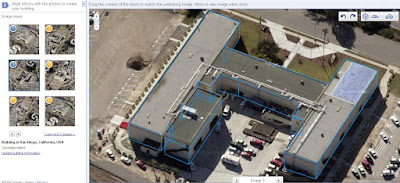I'm pleased to announce that our new
LPS 9.3.2 service pack is now available. This isn't a major release, but it does contain a number of enhancements. In particular we've focused on LPS Core and enabling defense-oriented workflows throughout the software suite.
The new release can be accessed via your local distributor or if you are in an area where we sell direct you may download it from our
Support site: just login and navigate to "Fixes and Enhancements" on the left and then select "LPS 9.3." The installer also includes the
ERDAS IMAGINE 9.3.2 release as well.
Here's a summary of the new features and benefits:
• Significantly improved the performance of the following processes for any image that uses a Mixed Sensor geometric model.
- Ortho resampling using Mixed Sensor in LPS
- Ortho resampling using calibrated images with Mixed Sensor in Geometric Correction
- Display of calibrated images with Mixed Sensor in Viewer (with “Orient Image to Map System” on)
• Extended the preference that controls the display of the full file pathname to apply to all pick lists and cell array interfaces where the full file pathname displays.
• Added a preference to force constraints on tie points that have a very narrow ray convergence.
Stereo Point Measurement/Classic Point Measurement
• Added “Force North-up” icon to the viewer. This new feature rotates all images to North-up direction and makes it easier to locate similar areas or common points.
• Added a “View” tab on the Properties dialog that allows you to maintain the same scale factor over all images. This way images with different native scales will be displayed in the same map scale.
• Added an option in SPM to choose to display either image coordinates or ground coordinates in the status bar.
• Added “Threshold to compensate for relative rotation of image pairs to improve ATE results” preference. This preference improves ATE results when image pairs have an uncommon relative image rotation by eliminating holes or blunders.
• Added a "save" capability that stores the image's statistic data with the images and loads it automatically when you reopen the project.
• When exporting seamlines from MosaicPro, those shapefiles now contain additional information stored as attributes. These attributes include the image name and acquisition date and time. This makes it easier to relate a seamline to the image from which it was derived. The output shapefile is consumed by the IMAGINE RPF exporter when making CIB to automatically drive output product values.
• A new feature in MosaicPro extracts the image acquisition date from image metadata (when available) and allows you to sort images based on acquisition date. Now you can sort images for mosaic priority with the most recent on top. You can also enter or edit the date in the cell array and revise the order. Search for "Sort Images" in the online help for complete instructions on
this new feature.
• A new tool for collecting object height-annotated symbols
• New PROLPS driver options to automatically disable AccuDraw and AccuSnap
• Support for PRO600 for SOCET SET 5.4.2
Sensor Models
• Significantly improved the performance of the followingprocesses for any image that uses the CSM geometric model. This includes the MC&G model.
o Ortho resampling using calibrated images with CSM in Geometric Correction.
o Display of calibrated images with CSM in Viewer (with “Orient Image to Map System” on).
Image Slicer
• Significantly improved the segment footprint computation when using a terrain file.
Precision Ellipse Generation (PEG) Tool
• Added a tool to support precise computation of the error ellipse for an RPC image/DTED intersection. The resulting ellipses display in the Viewer and graphically show the confidence in the reported position of a given point location. You can export these ellipses to fully
attributed 2D or 3D shapefiles.

















































